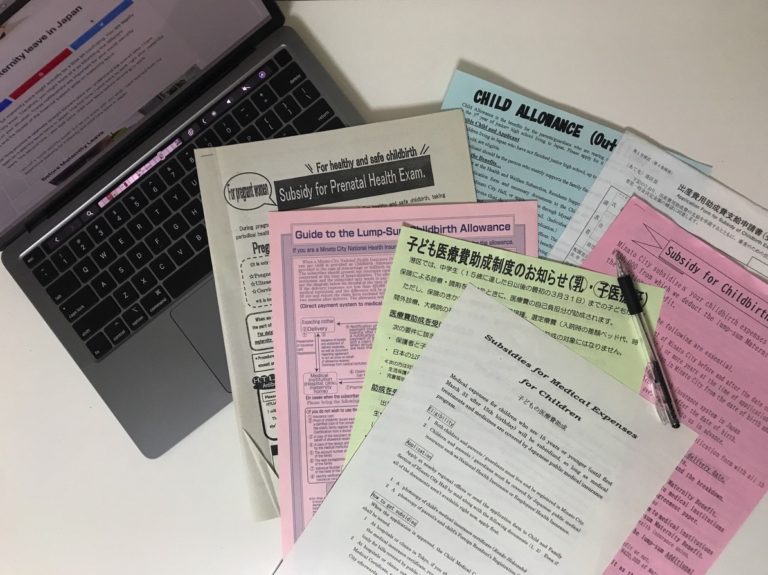Pregnancy in Japan
Throughout my pregnancy people would often say to me “But isn’t it scary to have a baby in a foreign country?” I have had all three of my daughters in Japan. Therefore, a pregnancy in Japan is the norm to me and I hope my experience can put other expecting mommas-to-be at ease.
During my second pregnancy in 2021 I was lucky to have 7 other girlfriends expecting around the same time. One of them in the US, one in Mexico, one in the UK and the rest in Germany. None of us would have thought how different the treatment of pregnancy still is across the globe.
Here is my pregnancy journey in Japan. More specifically in Tokyo, Minato-Ku and with Aiiku Hospital.
Confirming Your Pregnancy
If you’re suspecting you’re pregnant you can just head to your local pharmacy and get a home pee-on-a-stick pregnancy test for a few hundred yen.
Depending on the size and location of the pharmacy they will have only local Japanese brands or also carry international brands like ‘clearblue’. Common Japanese brands are ‘do test’ and ‘Check One‘.

To confirm your pregnancy, you can go to your regular gynecologist or ladies’ clinic. Be aware that in Japan the ‘regular’ gynecologists do not support you throughout your pregnancy. After they confirm the heartbeat you will be transferred to a hospital. You will do all your pre-natal check ups and give birth at the hospital but more on that later.
The heartbeat can usually be seen from around 7 weeks of pregnancy. If you go too early you might see a black bubble has formed in your uterus only. Don’t be concerned. This is a first positive sign of pregnancy and your doctor will ask you to come back a week or two later to confirm the heartbeat.
Once the heartbeat is confirmed your doctor will give you a pregnancy confirmation (ninshin todoke). They will also let you know if they can support you throughout the pregnancy or not. The clinic I went to did not and therefore asked me which hospital I wanted to go to. Luckily, I had already done my research and was able to give them the name. Popular hospitals can be difficult to get into. My doctor wrote a letter of recommendation that I could show at the hospital.
Registering Your Pregnancy
Once your pregnancy is confirmed there are two things you have to do: Register your pregnancy with the ward office or local health center and register with a hospital to give birth.
Registering With The Ward Office
Take the pregnancy confirmation and your resident card to your local ward office and inform them about your pregnancy. Upon doing so you will be handed a pregnancy goodie bag that includes the following items:
Maternal and Child Health Handbook (boshi kenkou techou (母子健康手帳) )
The doctors use this book to document your health during pregnancy, all birth related information from you and your baby and your child’s development until primary school incl. vaccinations. You have to bring it to all pre-natal and child health check ups.
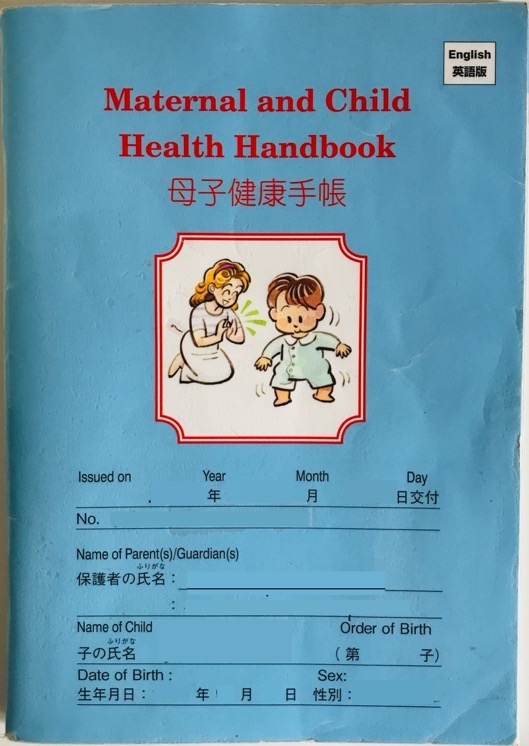
Pregnancy / Maternity Badge (Mataniti māku マタニティーマーク)
You have probably seen the picture of the badge on trains and busses in the special seat zone. The badge shall help you to get access to the seats in these areas. By wearing it on your bag or jacket others can easily identify you as pregnant and will hopefully offer their seat to you.
You can also buy this badge in various versions from different places.

Pregnancy Health Check Up Coupons (Ninshin Kenkou shinsa jushin hyou 妊娠健康診査受診票)
Having a baby is not covered by Japanese National Health Insurance, neither the pre-natal care nor birth. Depending on your ward, these coupons are available to all pregnant women to support with the costs of pre-natal care.
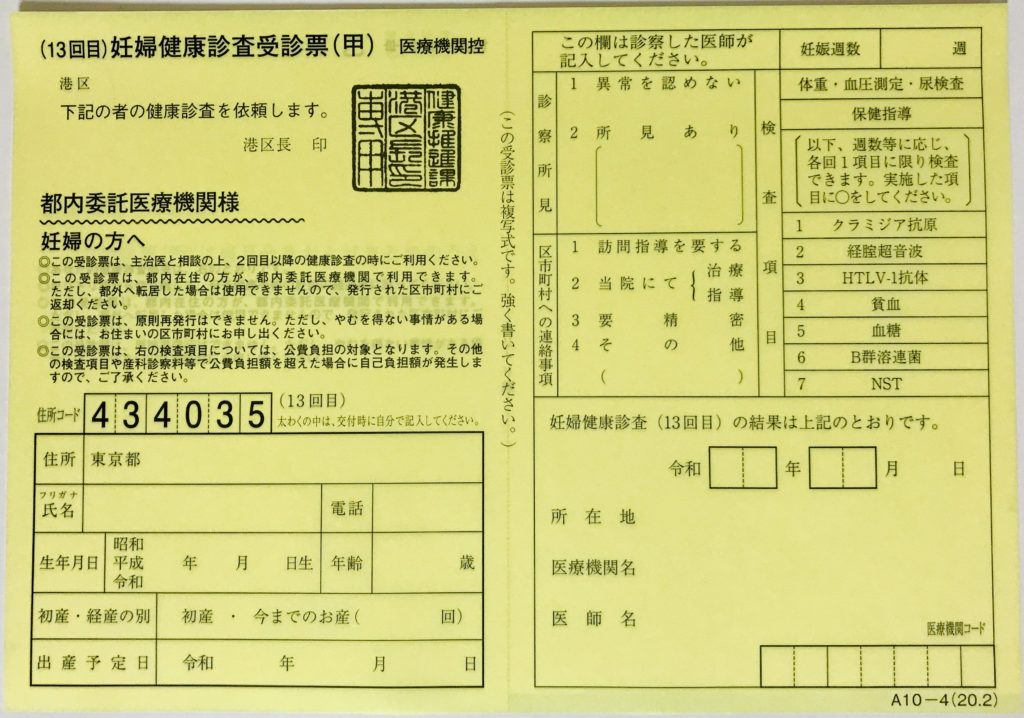
You can find more details on the financial support for having a baby in Japan here: Don’t Miss out: Complete List of Financial Benefits for Pregnancy, Birth and Child Care
A Bus Pass
This is depending on your ward. Minato Ku has a special local bus. As a pregnant woman you get free access to this bus. The pass is issued when you register your pregnancy.
Information Leaflets and Application Forms
You will be handed with a bag full of information. The most important information and forms had English versions available at my ward office in Minato Ku. Pay special attention to this pack of documents as it includes information on financial benefits, how to apply for it as well as the application forms. It also informs you of any pre-natal, postpartum and child care related benefits available in your ward. These range from maternity or ‘mama-papa’ classes to home visits by a mid wife or free cleaning services.
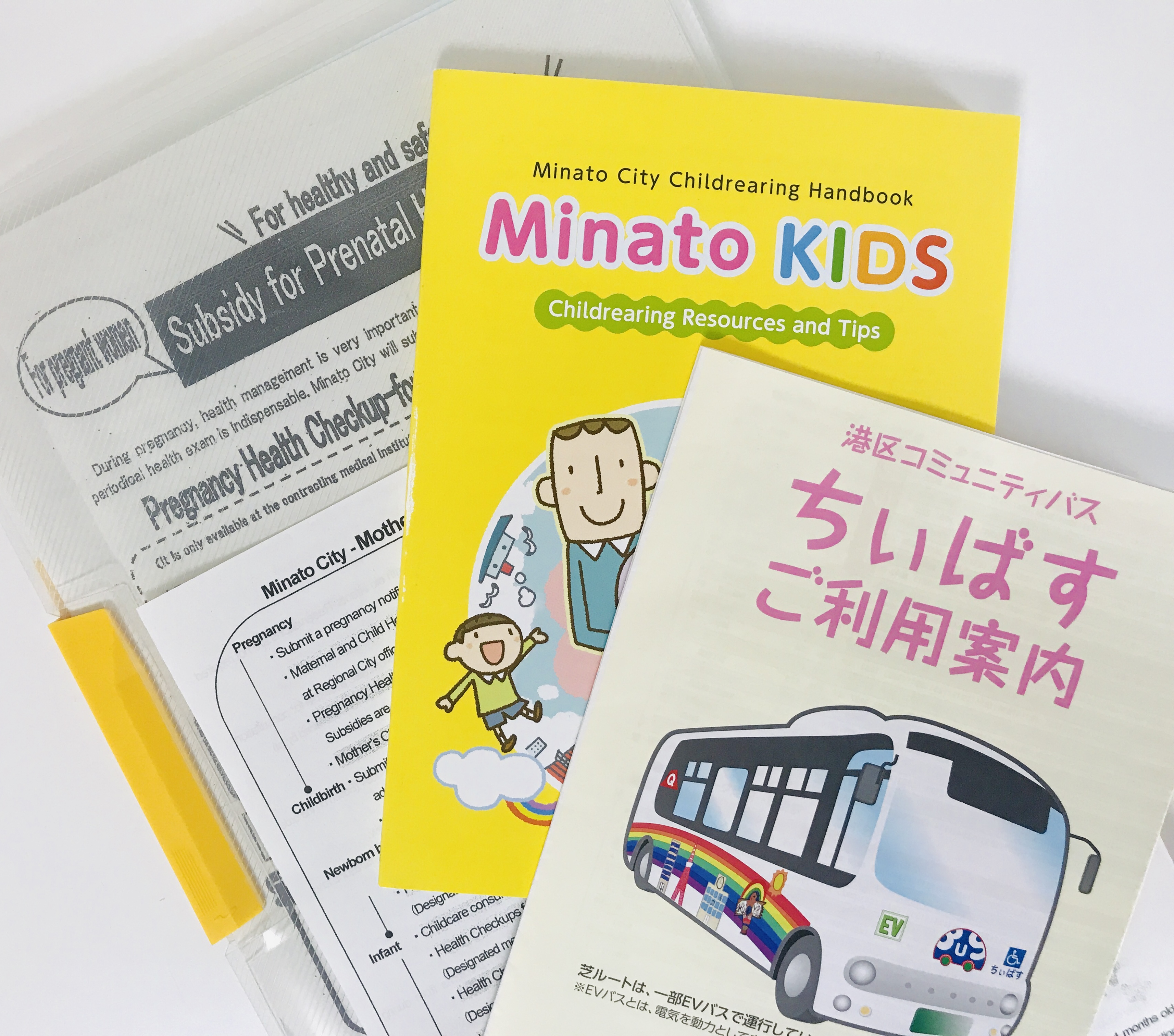
Registering With Your Hospital
As mentioned above, pre-natal check ups take place at a hospital. Contrary to what I thought in my first pregnancy it is not simply going to the hospital and registering as a patient. You might need a letter of recommendation and the hospital needs to have availability at the time of your expected due date.
When you go to the hospital they will very early on ask you if you want to give birth at their facility. To ‘reserve your spot’ you will have to pay an application fee before the end of the first trimester. At my hospital the fee was 200,000JPY both in 2019 and in 2021. The application fee will later be considered for the cost of child birth so that it is a pre-payment towards the child birth costs. Do not loose the receipt of payment confirmation!
Upon registration with the hospital I received another information bag. It included a list of tests that would be performed throughout the pregnancy, consent forms, a prenatal check schedule, a hospital bag list, information about the available rooms after delivery and its costs. See below for more information about birth.
Planning Your Pregnancy
If you are working, the end of the first trimester might also be a good time to inform yourself about maternity and childcare leave rules and regulations, both on the country as well as on your company’s level. In my “Beginner’s Guide to Maternity Leave in Japan” you can find all the most important aspects plus helpful links to date and benefit calculators. How to apply for maternity and child care leave can also be confusing at first. Start looking into the right documents and submission deadlines early to not get stressed.
If you are unsure how to communicate your pregnancy to your employer, you can find my best tips here. I have not only been in the situation to inform my employer about my pregnancy three times but I have also had a team member inform me about their pregnancy. My view as a manager on maternity leave plans or the questions in my maternity leave survey might also be helpful to you.
Prenatal Check Ups
I have had two pregnancies at the same hospital in Tokyo. Even though I don’t speak Japanese I went through the Japanese ‘open system’. This meant that I did not have the same doctor at each appointment and I didn’t know which doctor would be attending delivery.
Prenatal Check Up Schedule
The prenatal check up schedule followed the scheme mentioned below both times. There are 14 check ups in total.
First trimester
- Check up every two weeks
Second Trimester (15 – 28 weeks)
- Check up once every four weeks
- 2 big ultrasound check to check the organs of the baby which take about 20 minutes
Third Trimester
- 28 – 36 weeks: Check up every two weeks
- From week 36 – Check up every week. In week 36 and week 38 a stress test was performed. You are attached to a fetal heart beat and contractions recording machine for about 45 minutes before your check up with the doctor.
Check Up Routine
Check In
Present health insurance and hospital ID at the front desk and receive your pager

Pre-Check
A urine test of which you will receive the result in the consultation with the doctor.
Weigh in and blood pressure measure by yourself which you have to hand over to the doctor.
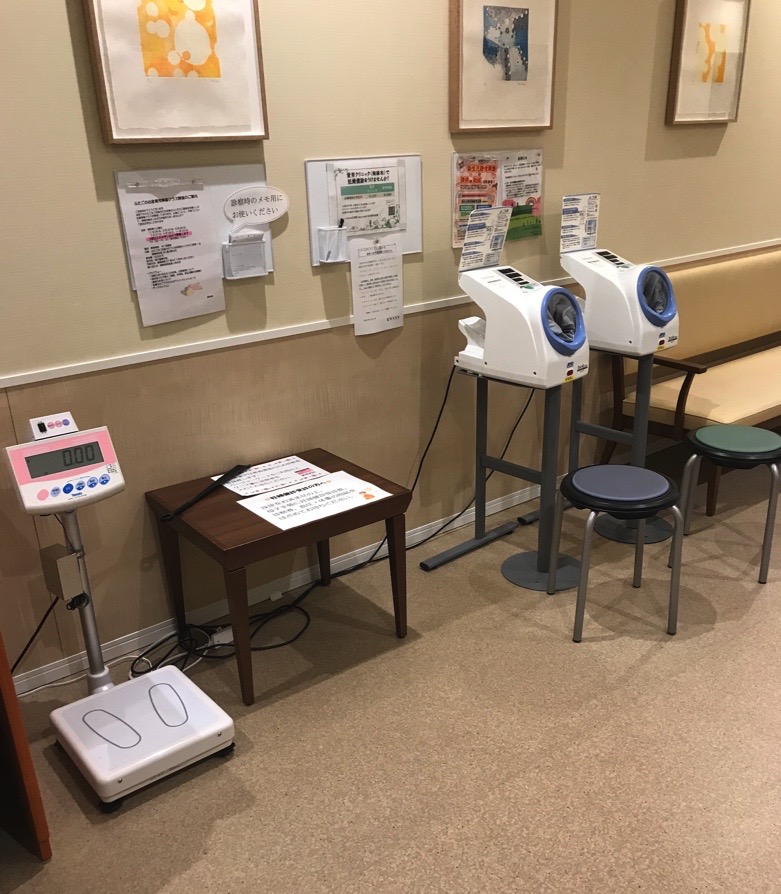
Consultation with Doctor
The pager will let you know which room to go into and when. As you enter the doctor’s room you hand over the maternal and child health book, the applicable coupon and your weight and blood pressure information. A nurse will check any inflammation/water retention in your legs and measure your belly size. The doctor performs an ultrasound check after which there is time to discuss any issues. The doctor will then inform you of the next visit date and hand you the signed coupon. These visits usually lasted less than 10 minutes.
Check Out and Payment
Present signed coupon at front desk and make a new appointment. Even though it is an open system, it is possible to ask to see the same doctor and in my case doctors that speak some English. Then you have to wait until they prepare your bill. The pager informs you when your bill is ready and you can pay at the check out machine.
Preparation For Having The Baby
There is a lot that you can do to prepare for baby’s arrival such as setting up the nursery or exercises. Here I am just going to talk about three things that seemed specific to Japan. Either in itself or in the way it was done.
Birth Plan
My hospital asked me to prepare my birth plan by week 32. The goodie bag included a questionnaire about what kind of birth I wanted. By week 32 I had a meeting with a midwife to go through my birth plan and to confirm the items that were important to me.
Japan is full of rules and policies and it ca be very difficult to get exceptions. In my hospital it is e.g. policy to give birth while lying on your back and there is no way around it. I had three natural, unmedicated intervention free births so it is not a problem to do it this way. (Find out how I prepared for them.) However, I would have preferred to not be restricted and being without any choice. Besides the birth style there are also many rules about whether the hospital offers epidurals or not or at which time. Some institutions or doctors are known for performing interventions such as episiotomies. Therefore my recommendation is to thoroughly check and inform yourself about the institution where you want to give birth and whether it fits your birth plan.
Hospital Bag
Yes, you are going to the hospital without the baby and will be coming back with a baby in your arms. Given that you are staying in the hospital for almost a week in Japan, you should give your hospital bag some thought. Only some though.
First of all, check with your hospital what items they will provide you with after giving birth. In my hospital, I was provided with maternity pads (the huge ones) and panties (the front opening ones), enough diapers and wet wipes for baby as well as clothes for the baby during the stay. Once you know what your hospital will provide you with, you can start planning and preparing your bag.
Maternity Taxi
The maternity taxi is a service where you can pre-register your trip from your home to your hospital. By the time you are in labour, you only have to inform the taxi group of the reservation number and they already know the coordinates. In my case, the taxi was a normal taxi with the only difference that the driver placed mats over the seats in the back for us to sit on.
Maternity and ‘Mama Papa’ Classes
Last but not least, I want to mention the preparatory classes that the ward offered before baby’s arrival.
The Maternity Classes was directed at just the mother. After indication that I don’t speak Japanese they offered me a translator – for free. The translator was a senior citizen that volunteered to do so. There were a few other foreigners in my class also going through the class with their senior citizen translator.
The maternity class was very comprehensive covering all aspects around having a baby: what happens during birth, how to care for a new born, how to prepare and take care of your home, what happens to the mother in terms of hormones, stretches and exercises, dental and nutrition guidance, etc.
The ‘Mama Papa’ Class was divided into 5 sessions: General introduction incl. a video on the daily life with a newborn, how to wash a newborn, how to dress a newborn, dads to wear pregnancy weights to get a better understanding for their pregnant partners and a group session with couples from your neighborhood to get to know each other and exchange worries and what you’re looking forward to. The dads had to perform all the active activities so that it felt more like a ‘Papa’ class overall – to the amusement of the wives.
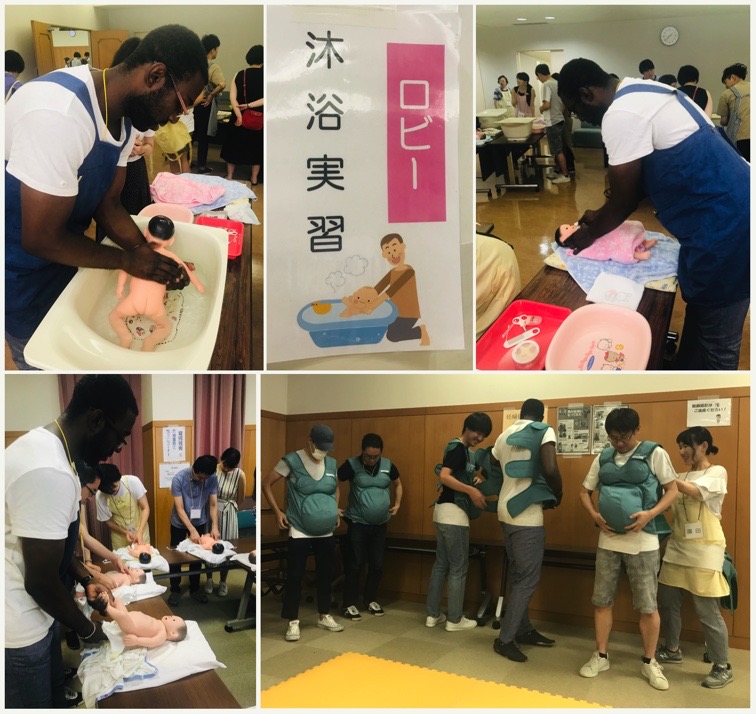
The classes were scheduled based on your due date with the application deadlines indicated in the information pack you receive from the ward office.
Final Words
Pregnancy in Japan may come with a lot administration, a lot of time for appointments and check ups, may seem very inflexible at times and come at your own expense. Seeing how few check ups are offered in other countries and how other things are handled I feel happy to have had my daughters here. Japan continues to be one of the countries with the lowest infant mortality rates.
Do you have any questions regarding pregnancy in Japan? Leave them in the comments below or send me a message.
Continue reading:
The Beginner’s Guide to Maternity Leave in Japan
How to Apply for Maternity Leave in Japan
7 Best Tips to Communicate your Pregnancy and Maternity Leave To Your Employer








